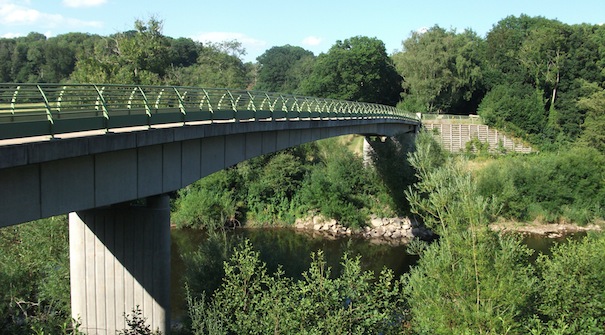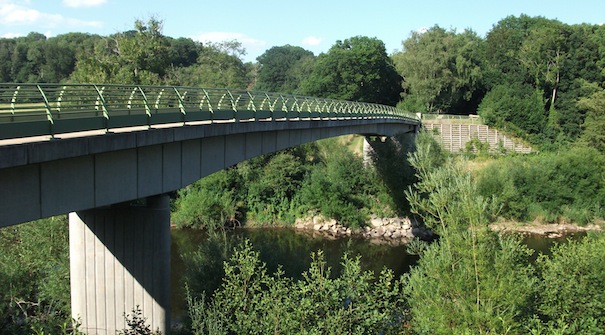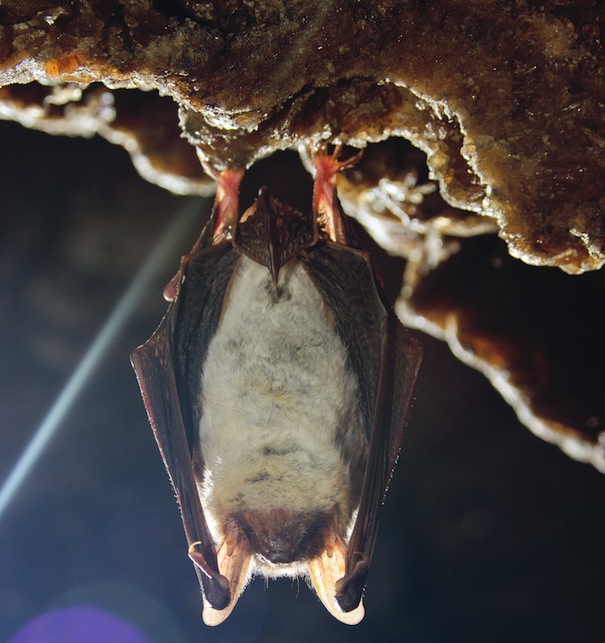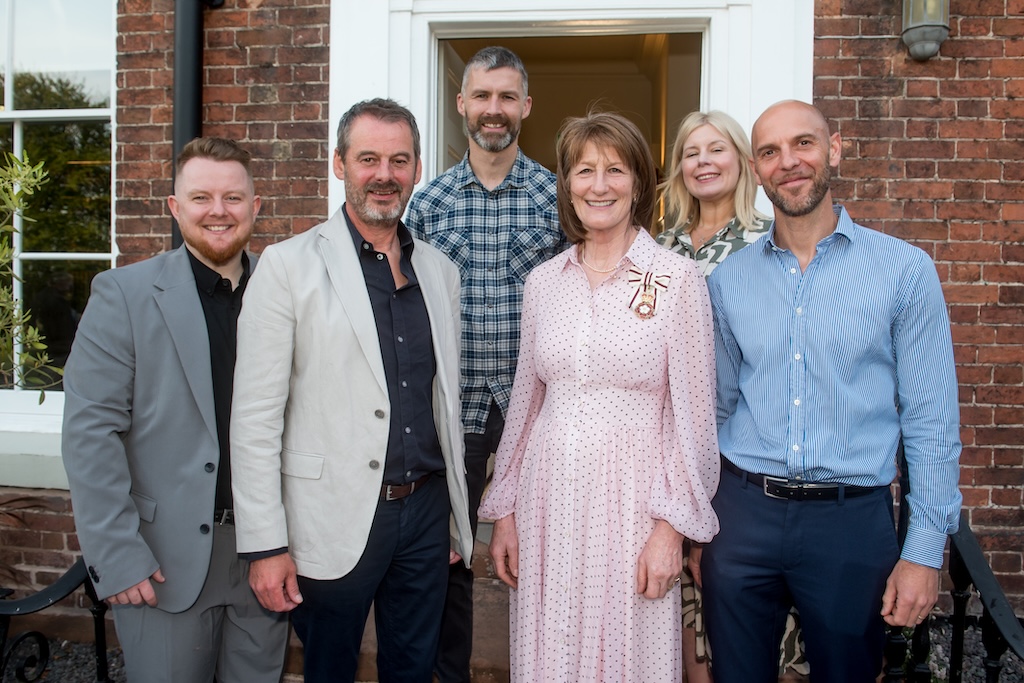The Colliery Bridge at Severn Valley Country Park links the two communities of Alveley and Highley. The original bridge was constructed in 1936 to transport coal and miners across the river. It was said to be the first concrete cantilever bridge in the world. Over time, the metal reinforcement within the structure rusted and caused the concrete to break down. Cracks and crevices began to open up in the old bridge, creating the perfect homes for bats.
In 2006 the bridge was replaced. A bat survey showed that the old bridge had become an extremely important site for bats, with four different species using it as a roost. Because bats are a legally protected species, environmental consultants were brought in to ensure development had a minimal impact on the local bat population. The new bridge was designed to be as bat-friendly as possible. Honeysuckle has even been planted next to the retaining wall. This night-scented creeper attracts flying insects (and hence bats, to eat them!). The official monitoring period has just finished but volunteers from Shropshire Bat Group will continue with the bat surveys.
In late July I met two members of Shropshire Bat Group to help with the first bat box survey. John Morgan is head of the group and an experienced bat worker. Dave Fulton’s first love was birds and bird ringing. He’s recently gained his bat handling license and is a passionate advocate for bat conservation, even caring for injured bats at his home.
A series of bat boxes were placed on the new bridge and on surrounding trees. The boxes are made of ‘wood-crete’ (a mixture of woodchip and concrete), which has better thermo-regulatory properties than timber. Bats require a relatively constant temperature in their roost. Between May and August female bats form maternity roosts. In September male and female bats roost together for mating season.
As John climbs the ladder, he spots some bat droppings that are stuck to the bridge underneath the first box. He explains that bats often leave droppings as they fly into the box. Tonight, however, the box is empty.
A precious find
Over the next hour we find bird nests, bumblebees and wasps in the boxes, but no bats. Eventually we move to an old oak tree that stands on the river bank. There are three boxes on the trunk, each facing a different direction. This is to give a range of temperatures for bats to choose from. John climbs the ladder and reaches into the box. He carefully lifts out a tiny bat.
Immediately the chaps set to work. They weigh the bat and measure the length of the forearm. They then sex the bat and carefully examine him. They can tell from the pattern of the veins in the wing membrane and the shape of the nose that this bat is a soprano pipistrelle. Pipistrelles are the most common species of bat in the UK and there are three types; the soprano pipistrelle is always found near water.
The evening has been sunny and calm but now clouds are building and, as we walk back over the bridge, the curtains of darkness are closing around us. We’ll have to come back another day to finish checking the boxes. I look out over the river and see swarms of midges dancing in the dying light. It’s been calculated that a pipistrelle bat will eat up to 3000 of these insects in one night. I turn on the bat detector and, sure enough, I can hear the sound of a soprano pipistrelle munching away.
Dusk in Bridgnorth
A few days after we check the bat boxes, I take a walk into Bridgnorth town centre armed with my bat detector. It’s shortly after sunset and the street lights are just coming on. A warm breeze fans my face and there’s not a cloud in the sky. Twilight in July seems to last forever… that magical period after the sun has set but before the stars come out. Looking across the town, the chimney pots on the skyline look crisp in the half light. I walk down the High Street, with the sound of music and laughter coming from pubs and restaurants. I take in the view from Castle Walk, the river snaking its way through the lights of Low Town. Approaching St. Mary’s Church, the bat detector springs into life. A pipistrelle is foraging amongst the trees in the churchyard, just a few minutes’ walk from the bustling High Street.
Some bats need large areas of ancient woodland in which to live, but the pipistrelle will quite happily live in modern buildings in towns and cities. Next time you draw the curtains ready to settle down on the sofa, take a minute to look out of your window at the nearest street light. You might see the silhouette of a bat fluttering around the light. Bats have evolved to occupy that secret place… underneath the stars, whilst the world sleeps.
Do one thing for wildlife this month
Even though pipistrelle bats can coexist quite happily alongside humans, their population is believed to have declined by 70% between 1978 and 1993. This is a sad indictment of the human impact on the natural world. Pipistrelles will often forage in gardens and the Bat Conservation Trust has listed five ways to make your garden more bat-friendly, which may help to reverse the decline in bat numbers:
- Plant night-scented flowers;
- Build a pond;
- Let your garden go a little wild;
- Put up a bat box;
- Create linear features such as hedges.
For more details, please see:
http://www.bats.org.uk/pages/encouraging_bats.html
– Edward Andrews, MSc.








